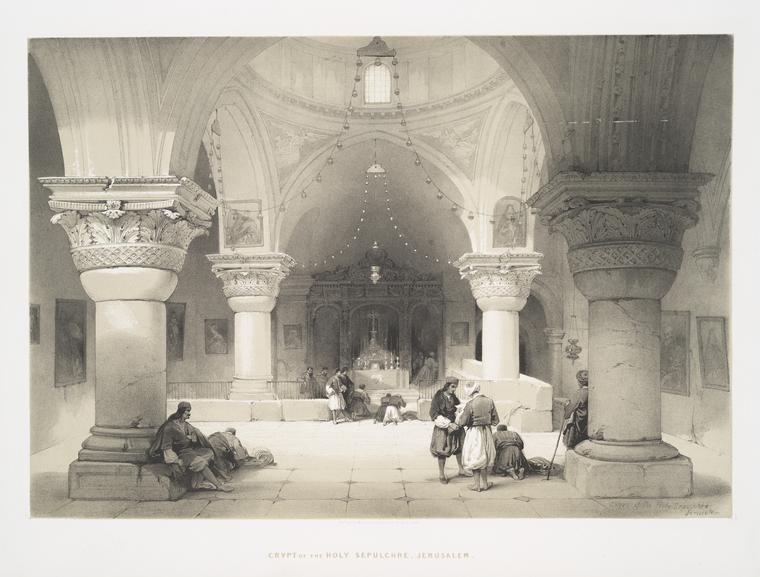In the 18th century, Egyptian monuments and then the Holy Land caught the fascination of scholars in Europe.

-
Architecture arabe, ou Monuments du Kaire, mesurés et dessinés, de 1818 à 1826 P. Coste. 1837
-
Panorama d'Egypte et de Nubie H. Horeau. 1841

-
Holy Land, Syria, Idumea, Arabia, Egypt and Nubia. From drawings made on the spot by David Roberts. With historical descriptions by the Revd. George Croly. Lithographed by Louis Haghe 1842-1849
-
Voyages au Soudan oriental, dans l'Afrique septentrionale et dans l'Asie Mineure exécutés de 1847 à 1854 P. Trémaux. 1852-1862
-
Histoire de l'art monumental dans l'antiquité et au moyen âge ; Suivi d'un Traité de la peinture sur verre (2e éd.) L. Batissier. 1860
-
Syrie centrale : architecture civile et religieuse du Ier au VIIe siècle M. de Vogüé. 1865
-
L'architecture des nations étrangères : étude sur les principales constructions du parc à l'Exposition universelle de Paris (1867) A. Normand. 1870
-
L'Architecture arabe des khalifes d'Égypte à l'Exposition universelle de Paris en 1889 : la rue du Caire A. Delort de Gléon. 1889
-
La mosquée El-Rifaï au Caire 1912
-
Photographies de divers bâtiments en Égypte
-
58 photos de monuments antiques d'Egypte, de Grèce et de Turquie
Émile Prisse d'Avennes (1807-1879)
As a skilful draughtsman and tireless polygraph, Émile Prisse d’Avennes was the author of a protean body of work about the ancient and medieval monuments of Egypt, discovered thanks to his recruitment in 1827 from the Egyptian military school, after training as an engineer at Arts et Métiers.
Mercedes Volait, doctor of history and research director at the CNRS (InVisu laboratory of the Institut National d'Histoire de l'Art)
Hammam
It was from Britain that the trend for steam baths spread to France during the Second Empire. Apart from their hygienic virtues, French society saw them as being places to socialise.
Mercedes Volait, doctor of history and research director at the CNRS (InVisu laboratory of the Institut National d'Histoire de l'Art)
Arthur-Ali Rhoné (1836-1910)
Arthur-Ali Rhoné embodies perfectly the figure of an amateur of great curiosity, devoting himself body and soul to all kinds of heritage causes, having failed to find a place in an academic institution. In particular, he made a decisive contribution to the protection of monuments in Cairo.
Mercedes Volait, doctor of history and research director at the CNRS (InVisu laboratory of the Institut National d'Histoire de l'Art)
The Volkoff Album: panorama of the public and private architecture of Cairo during the first half of the 20th century
The architecture of 20th century Cairo was photographed far less than its historical monuments. An album assembled in the early 1930s provides a rare anthology of productions that were then considered to be eminent.
Mercedes Volait, doctor of history and research director at the CNRS (InVisu laboratory of the Institut national d'histoire de l'art)


